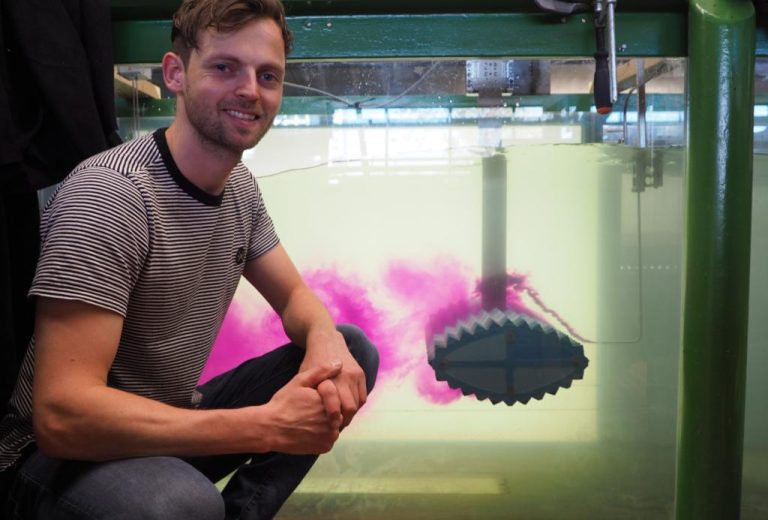Water lab tests floating tunnel

Niels Ruiter. (Photo: Jos Wassink)
Niels Ruiter, master student of Hydraulic Engineering, is working on a 1:50 model of a floating tunnel in one of the flumes of the Waterlab. In early March, Dr Pengxu Zou obtained his doctorate with a thesis on the optimal shape of the tunnel: a flattened pointed ellipse that can be recognised in cross-section. A purple dye traces the eddies in the current.
For his graduation, Ruiter compares the horizontal and vertical forces on the elliptical and on a round tunnel with and without a rough surface (which simulates fouling). The glass-walled wave trench can generate currents and waves at the same time.
According to his graduation supervisor Prof. Wim Uijttewaal (Faculty of Civil Engineering and Geo Sciences), a 1:10 model or larger would be the logical next step, but would require a larger flume such as Deltares’ Delta Flume (Dutch only).
Do you have a question or comment about this article?
j.w.wassink@tudelft.nl

Comments are closed.